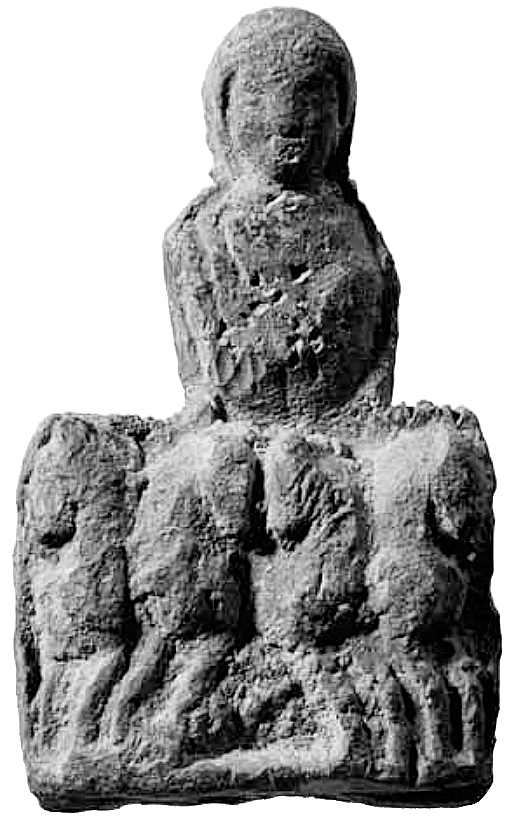In the 1960's the remains of an early-Christian church were excavated next to and below the church of St. Gallus, in the north-east part of the fortress.
The church of St. Gallus. Photo: Wikimedia, Dimelina.It was a rectangular church (24.8 x 12.5 m.) with an apse to the east and flanked by annexes including a small bathing complex. It was erected in the second half of the fourth century and later enlarged. It has been suggested that one of the bathing rooms, a cold bath with a horseshoe-shaped basin (room H, 3 x 4 meters), was used as a baptisterium, but this is not generally accepted anymore. One bishop from the Castrum Rauracense is known: Justinianus Rauracorum, who took part in the Council of Serdica (Sofia, Bulgaria) in 343-344 AD and in the Council of Cologne (Germany) in 346 AD. The church with adjoining rooms will have been the seat of the bishop.
Plan and reconstruction drawing of the church. Schwarz 2004, Fig. 4.
A/B: annexes; C: interior court, atrium; D/E: living and storage rooms (?); F: vestibule of baths; G: baths; H: cold water basin, baptismal font (?).
1: place of discovery of a coin hoard buried around 351/352 AD; 2: place of discovery of a coin hoard with coins of Valens (367-375 AD).
Photo of the excavations in 1964 with rooms B-F-G-H. Photo: Faccani 2012, Abb. 86.
Reconstruction drawing and drawing of the remains by Markus Schaub. Aitken 2009.A lead relief of what seems to be a charioteer and a quadriga was also found during the excavations (formerly interpreted as Epona, protective deity of horses).

The lead relief (h. 0.158). Photo: Faccani 2012, Taf. 13, 383.
Burial places were located to the west, south and east of the fortress. In a necropolis to the south-east a small building with an apse (5.30 x 4.30 m.) has been interpreted as a cella memoriae (martyrium), built around 400 AD. There seems to have been a church here as well, built in the seventh century. Some Christian funerary inscriptions of sandstone were found: of Eustata, with an anchor, from the third or fourth century (perhaps pagan); of Baudoaldus, with a cross, from the sixth or seventh century; of Radoara, from the seventh or eighth century.
The funerary inscriptions of Eustata, Baudoaldus and Radoara.
D(is) M(anibus) ET MEMORI(a)E AETERN(a)E EVSSTAT(a)E CONIVGI DVLCISSIM(a)E QVI VISIT ANN[os] LXV AMATVS POSVIT
To the gods of the underworld and the eternal memory of Eustata, dearest wife, who lived 65 years, Amatus placed it.
D(is) M(anibus) IN HOC TVMOLO REQVIISCIT BON(a)E MEMORIAE BAVDOALDVS
QVI VIXIT IN PACE ANNVS LV ET [obi]IT QVINTO DE[cimo kal(endas)] OCTOBRIS
To the gods of the underworld. In this burial mound rests Baudoaldus of good memory,
who lived in peace for 55 years and died on September 17th.
HIC REQVIISC(i)T RADOARA IN〈n〉OX
Here rests the innocent Radoara.
EDCS-10900337, 10800712 and 10800713. Photos: EDCS and Aitken 2009.Here we may also mention a ring with the menorah, the seven-branched candelabrum, found in the area of the fortress during a rescue excavation in 2001.
The menorah-ring. Photo: Berger 2005.
[26-Sep-2023]